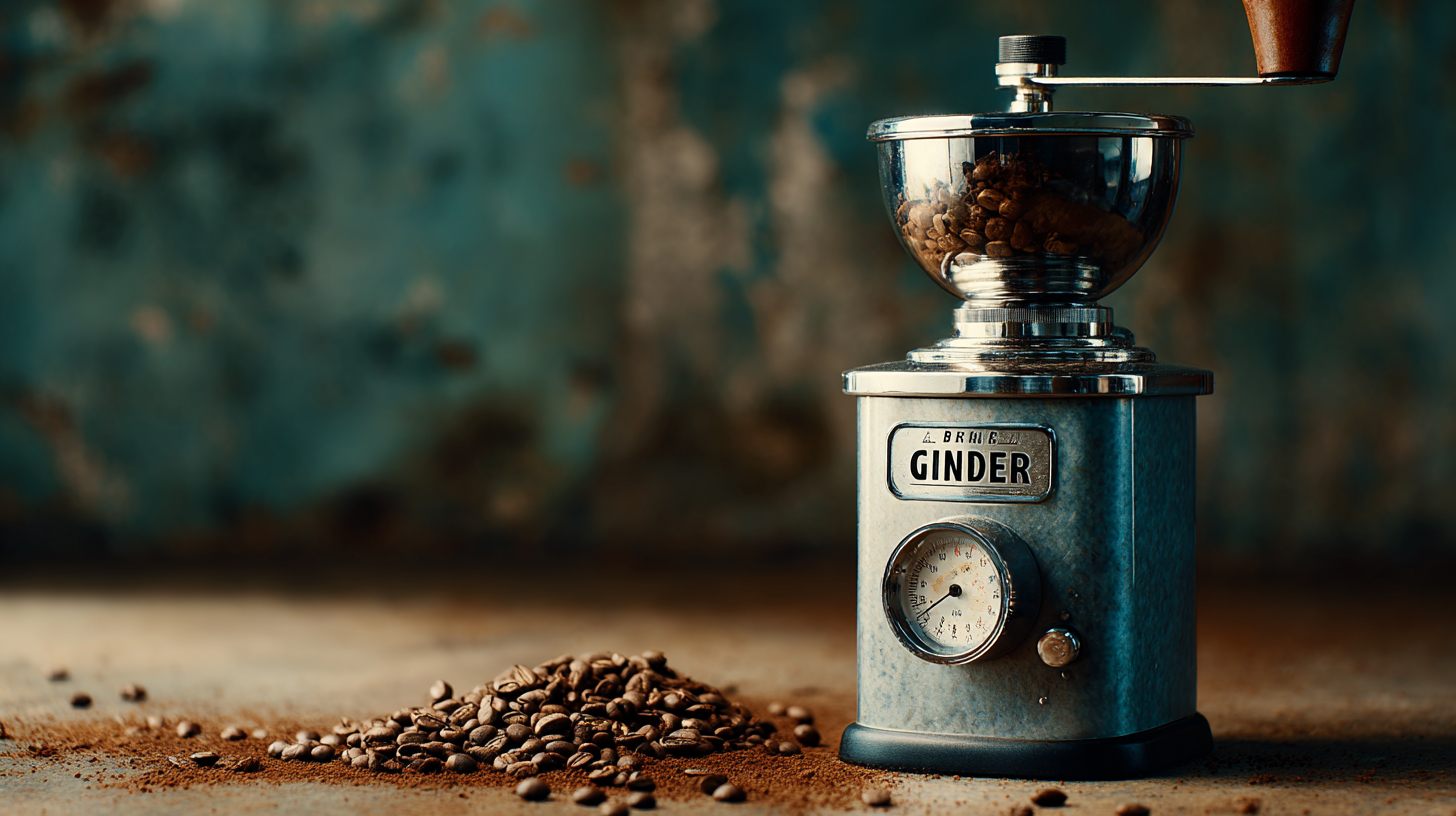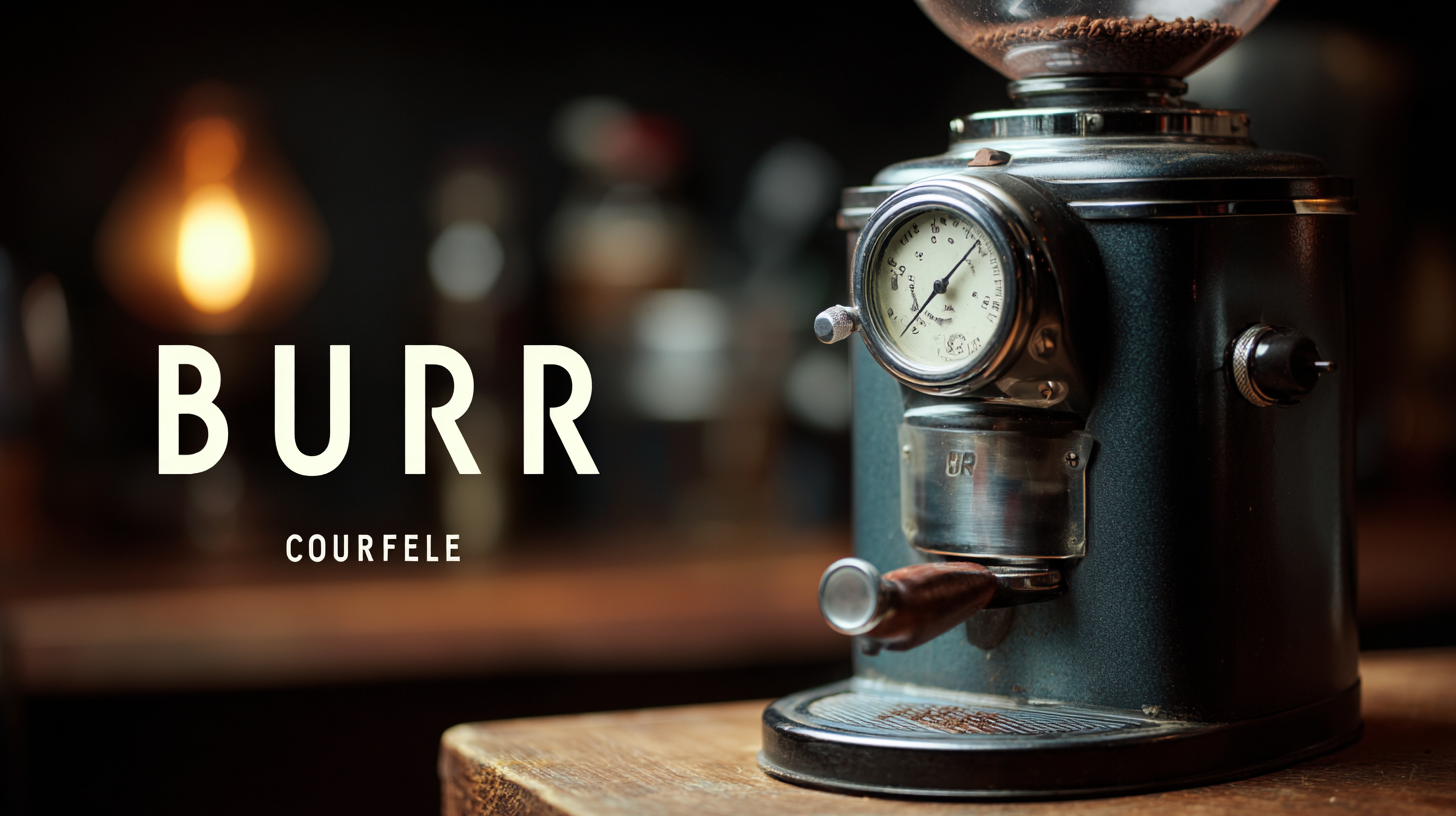Leave Your Message
-
Phone
-
E-mail
-
Whatsapp
-
Whatsapp


Choosing the right equipment is crucial for any business that serves coffee, and one of the most important pieces of machinery is the burr coffee grinder. Unlike blade grinders, burr coffee grinders provide a consistent grind size, which is essential for extracting the perfect flavor from coffee beans. However, with so many options available on the market, selecting the best burr coffee grinder for your specific business needs can be overwhelming. In this ultimate guide, we’ll walk you through seven essential tips that will help you navigate through the myriad of choices, ensuring you find a grinder that not only meets your operational demands but also enhances your coffee offerings. Whether you run a bustling café, a gourmet coffee shop, or simply want to elevate your brewing experience, understanding the key features and specifications of burr coffee grinders will empower you to make an informed decision that benefits your business in the long run.

When selecting the perfect burr coffee grinder for your business, it's crucial to understand the different types available. Primarily, there are two categories: flat burr grinders and conical burr grinders. Flat burr grinders typically produce a more consistent grind size, which is essential for espresso and specialty coffee. They operate using two parallel rotating discs, allowing for greater precision. However, they can run hot, potentially affecting the flavor profile of the beans.
On the other hand, conical burr grinders feature a cone-shaped inner burr that sits within a ring-shaped outer burr. This design not only provides excellent grind consistency but also helps preserve the coffee's natural oils, which are vital for flavor. Conical grinders tend to be quieter and less messy, making them a popular choice for cafes and restaurants. Choosing between these options depends on your specific brewing methods and the volume of coffee you intend to grind, ensuring that you meet your customers' taste preferences effectively.
When selecting a commercial burr coffee grinder for your business, there are several key features to consider that can significantly impact the quality of your brew and overall efficiency. Firstly, the grind settings are crucial; look for a grinder that offers a range of grind sizes. This flexibility allows you to cater to various brewing methods, from espresso to French press, ensuring every cup meets the desired flavor profile.
Another vital feature is the build quality and durability of the grinder. Commercial environments demand equipment that can withstand heavy use, so prioritize grinders made from high-quality materials. Stainless steel burrs are ideal as they maintain sharpness over time and resist wear. Additionally, features like a noise-reducing design and ease of cleaning can enhance both the customer experience and grinder longevity. Finally, consider whether the grinder has a dosing mechanism, which can streamline operations by portioning out precise amounts of coffee for consistency in every brew.

When selecting a burr coffee grinder for quality coffee production, one of the most crucial factors to consider is grind size consistency. Industry reports indicate that inconsistent grind size can lead to uneven extraction, which affects flavor and aroma. According to a study by the Specialty Coffee Association (SCA), approximately 30% of coffee drinkers cite poor flavor as their top complaint, often linked to inadequate grinding techniques. A reliable burr grinder should produce uniform particle sizes to ensure each cup achieves optimal extraction efficiency.
Moreover, the ideal grind size varies depending on the brewing method—coarse for French press, medium for drip, and fine for espresso. The American Coffee Research Institute suggests that maintaining the right grind size is crucial for achieving a balanced cup, enhancing sweetness and acidity while mitigating bitterness. With a quality burr coffee grinder, businesses can not only meet these varying grind size needs but also improve overall customer satisfaction by delivering a consistent coffee experience that resonates with quality-conscious consumers. Investing in a grinder that prioritizes grind size consistency is a step toward elevating your coffee offerings and ensuring repeat business.
When it comes to selecting the best burr coffee grinder for your business, budget considerations play a crucial role. You don't have to break the bank to find a quality grinder that meets your needs. Start by setting a realistic budget that accounts for the volume you expect to serve. Keep in mind that investing in a slightly higher-priced burr grinder can often yield better performance and durability, ultimately saving you money in the long run.

One essential tip is to prioritize your specific requirements. Think about your business model—whether it's a high-traffic café or a small artisanal roaster, the grind size, consistency, and speed matter. Research different brands and models within your budget that cater to your unique needs, ensuring you strike a balance between cost and capability. Another important factor is to look for grinders that offer warranties or service plans. This can provide peace of mind and further protect your investment.
Lastly, consider the availability of replacement parts and customer support for the burr grinder you’re eyeing. A reliable support system can make a significant difference if your grinder requires repairs or maintenance. By keeping these budget-friendly tips in mind, you can confidently choose a burr coffee grinder that enhances your business without straining your finances.
When it comes to maintaining your burr coffee grinder, regular cleaning is paramount. Residue buildup can affect the flavor of your coffee and the overall performance of the grinder. To keep your grinder in top condition, aim to clean it at least once a week. Start by unplugging the machine, then disassemble the grinder according to the manufacturer's instructions. Use a soft brush to remove any coffee particles from the burrs and grind chamber, and wipe down any remaining areas with a damp cloth.
Another critical aspect of maintenance is adjusting the grind settings. Burr coffee grinders are designed for precision, and over time, the settings may need fine-tuning as the burrs wear down. Regularly checking and calibrating the grind size will ensure consistency in your coffee extraction. Additionally, monitor the performance of the grinder; if you notice any changes in how your coffee brews, it could be time for a professional service or parts replacement. Keeping detailed notes on any adjustments can also help track how often maintenance is needed, ultimately extending the life of your grinder.
| Tip Number | Tip Description | Importance | Maintenance Advice |
|---|---|---|---|
| 1 | Consider the grinder's capacity based on your business size. | High | Clean burrs regularly to maintain consistent grinding performance. |
| 2 | Evaluate the grind settings for versatility. | Medium | Keep the grind chamber free of coffee residue to prevent clogs. |
| 3 | Look for a grinder with durable materials and construction. | High | Regularly check and tighten any loose screws or components. |
| 4 | Assess the ease of cleaning and maintenance. | Medium | Follow the manufacturer’s cleaning guidelines for best results. |
| 5 | Choose a grinder with good customer reviews. | Medium | Monitor customer feedback on performance and reliability. |
| 6 | Check for warranty and customer support options. | High | Keep receipts and warranty information easily accessible. |
| 7 | Consider your budget vs. features. | High | Evaluate the cost of replacement parts and service. |
